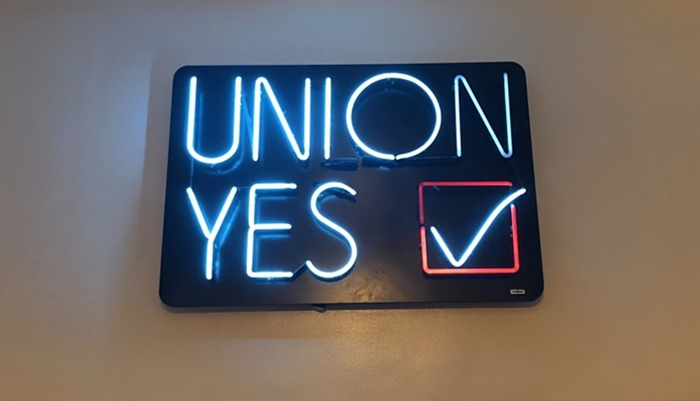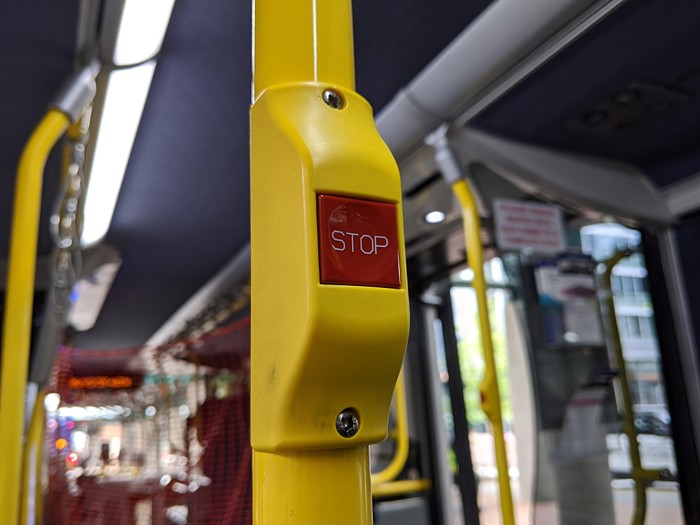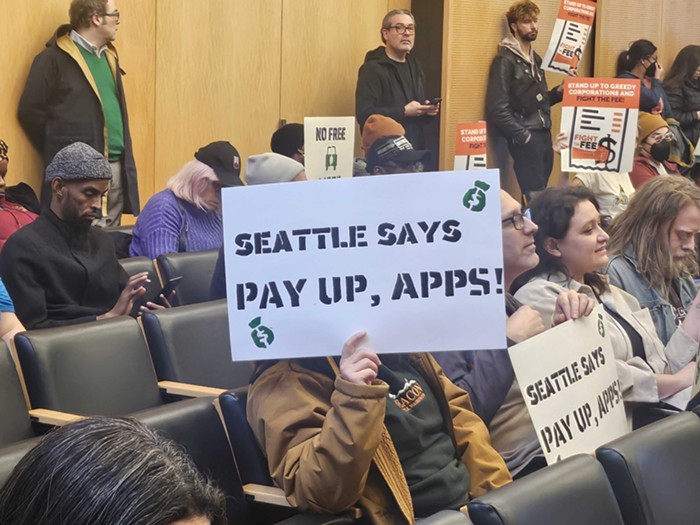This scene may soon be history. Seattle's oldest black church may head 11 miles south, to Renton.
"They say it's progress," says one churchgoer, a 91-year-old woman sporting a bright scarf and perfectly coifed white hair. The woman, who declined to give her name, says she'd like to keep the church at its historic location on 14th Avenue, between Pike and Pine.
Just weeks ago, that woman, along with most of the church's other 1,500 members, discovered that First A.M.E. may move south. Reverend Dr. John Hunter explained the situation to church members in a March 4 letter.
"For years, we have been seeking solutions to our parking problem, and we have been praying for a breakthrough which would allow us to house present and future ministries, as well as expand for future growth and church development," the letter says.
Hunter's solution is a large $14 million building off of I-405 in Renton. While his letter says that parking is the driving force behind a possible move, there's something else going on.
There's been a strong southward shift for Seattle's black population, says King County Council Member Larry Gossett, whose district includes the church. More black families are leaving central Seattle, he says. From 1990 to 2000, the Central District lost nearly 20 percent of its black residents.
"Most of the spread is south, with Renton being the hub," he says. Hunter hopes to tap into the large black population in South King County.
"This potential new church site... would serve Seattle and expand our church's reach to communities where an increasing number of African Americans are now living," the March 4 letter says.
Almost 40 percent of First A.M.E.'s congregation already com- mutes from South King County, while only a third live nearby in central Seattle.
According to census data, there's a trend of southward migration: From 1990 to 2000, the African American population in South King County jumped 125 percent, to 36,000 people. During the same 10 years in Seattle, the numbers dropped nearly 10 percent.
"Most South King County cities doubled or tripled their African American populations," says King County demographer Chandler Felt.
The oft-quoted reason behind the shift is gentrification. Houses in Seattle's Central District have appreciated at the highest rate in all of King County, pushing property taxes sky-high. That has forced many families to move south, where homes and taxes are cheaper.
Though the case can be made for First A.M.E.'s move to Renton, the church has deep historical roots in Seattle's African American community. The church was founded in 1886--making it one of the state's oldest churches--and the current structure rose in 1912, complete with stained glass windows from Italy. The apricot-colored building was designated a historic landmark in 1984.
"If we expect the Central Area to continue to be relevant to the black community," says Seattle City Council Member and church member Richard McIver, "we should consider the move very carefully."


















